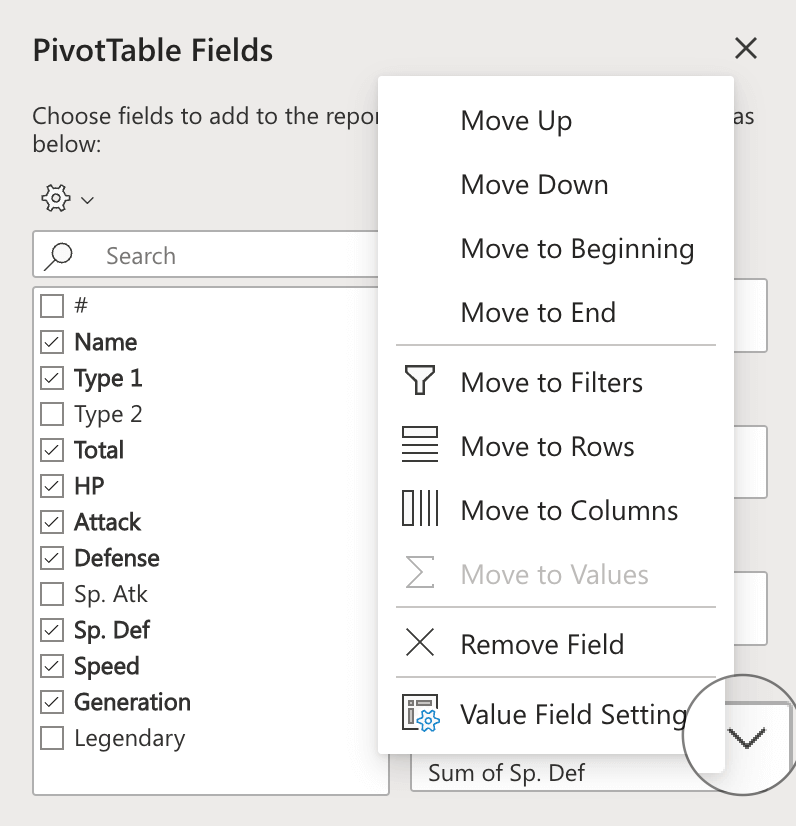Table Pivot Intro
PivotTable
Excel’s PivotTable feature aids in the organization and analysis of data.
It allows you to filter and sort data sets, conduct calculations, and add and remove values.
With PivotTable, you can arrange and shape data to better comprehend massive amounts of data.
The information you utilize must be in tabular form.
Data in a table format (rows and columns) is called a tabular form.
How a PivotTable Works
PivotTables have four main components:
- Columns
Data is tabulated vertically in columns.
The distinctive header appears at the top of the column.
The info that is listed below is specified in the header.
The heading in this instance is D5 (Sum of Attack).
The data are D6(110), D7(100), D8(50), D9(73), and so forth.

2. Rows
Data is tabulated horizontally in rows.
The same row’s data are connected.
In this instance, the Pokemon name is A8 (Alakazam).
The pokemons’ stats are represented by B8(500), C8(55), D8(50), and E8(45).
The header of each column displays the type of statistics.

3. Filters
To choose which data you see, filters are employed.
The Generation and Type 1 filters are both active in this case.
The filters have been set to Type (Psychic) and Generation (1).
Only Type 1 Psychic Generation 1 pokemon will be seen by us.
This generation and type of pokemon are all present in the table beneath the filter.

Filter view:

4. Values
The values determine how the data is presented.
How you Show and Summarize values is up to you.
Values for the range B5:E5 are defined in this example.
Every value setting in the range B5:E5 is the same: Total
B14:E14 is the range in which the Sum is summarized.

View of values settings:
The values’ names and settings are modifiable.

Fields and layout
The way the TablePivot is shown depends on your settings.
You can alter how the data is displayed by using the PivotTable Fields panel.
Fields and Layout are the two distinct settings.

- Fields
The properties of the data can be displayed or altered by selecting or unselecting the checkboxes.
The Speed item is checked in this case.
The table now shows the speed.

To alter the way the data is displayed, click the downward arrow.

2. Layout
To see the data in the table, drag and drop the fields into the boxes on the right.
You can drag them to the four boxes (four primary components) that we previously mentioned:
- Filters
- Rows
- Columns
- Values

In this example, we will drag and drop Sp. def to Values.

The table is now showing Sp. Def.
You can adjust the parameters for the fields you shifted to the right.
Press the descending arrow to get entry to the settings.
The four regions (filters, rows, columns, and values) allow for this.

Chapter summary
TablePivot has both basic and sophisticated uses.
It can be configured in a variety of ways.
There are numerous levels at your disposal for configuring cross filters, rows, columns, and values.
Your requirements and the way you wish to display the data will determine how you set it up.
